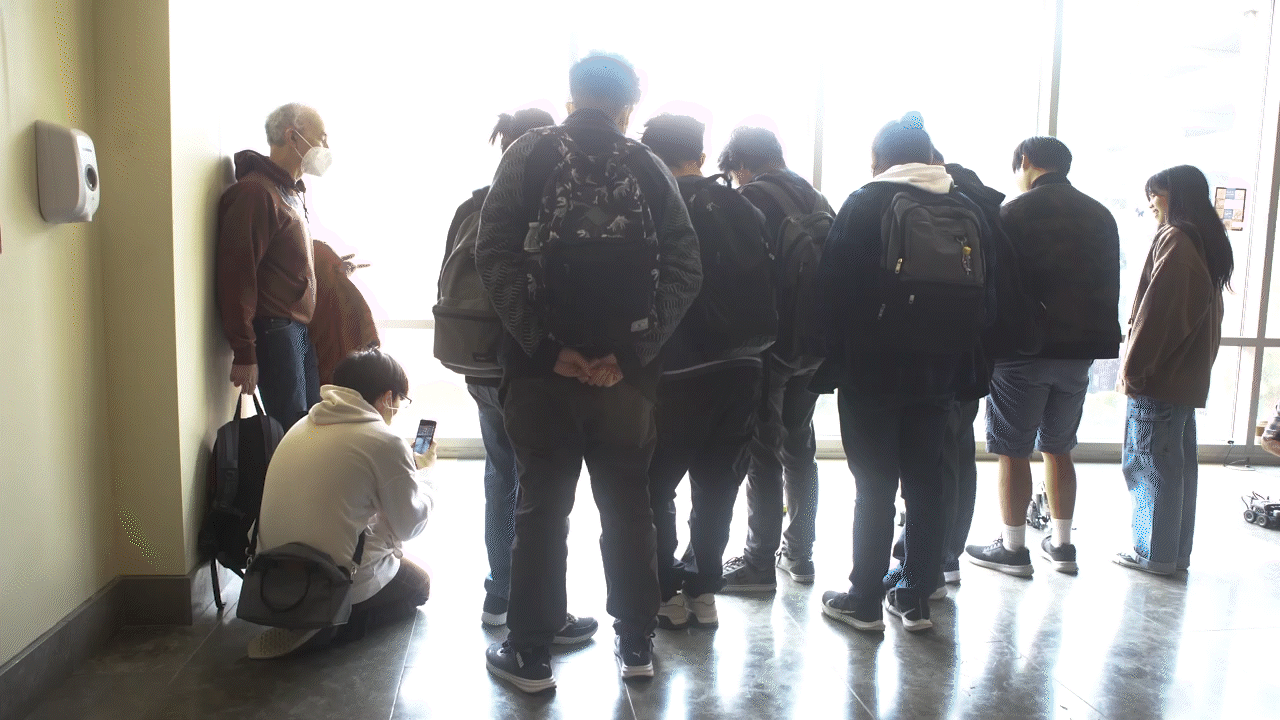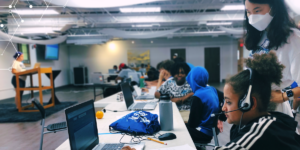
Scene from “When Dinosaurs Ruled the Earth” / Photo by Noe Montes
“When Dinosaurs Ruled the Earth”
a short film about autism, robots and dinosaurs
A glimpse at life in the near future, based on cutting edge research from Professor Maja Matarić and the USC Viterbi School’s Interaction Lab. The short film, created by the USC Viterbi School’s Office of Communications & Marketing in partnership with the Autism Society of America, was produced in celebration of April’s Autism Awareness Month and National Robotics Week (April 8-16, 2017).
It will be screened at the first ever AutFest 2017 international autism film festival in Orange County on April 22-23.
The story is about C.J., an 8-year-old autistic boy who lives in an imaginary world of dinosaurs. He spends every lunch and recess alone, playing with dinosaur games or puzzles. He’s never had a friend. With the aid of a 2-foot tall robot named KIWI, that is about to change.
Q&A with Maja Matarić
the Chan Soon-Shiong Professor of Computer Science, Neuroscience, and Pediatrics
Recently named #5 by Business Insider on the list of the “25 Most Powerful Women Engineers in Tech,” Matarić pioneered the field of socially assistive robotics (SAR) – robots that aid the elderly, such as stroke victims, and help autistic children with social interaction. Matarić was honored by President Obama in 2011 with the Presidential Award for Excellence in Science, Mathematics and Engineering Mentoring; ABI’s 2013 Women of Vision Awards; and Los Angeles Times Magazine’s Top 5 Visionaries.
Matarić imagines a future where personalized robots might act as “social bridges” between children on the spectrum and neurotypical children, helping navigate social cues and interactions.
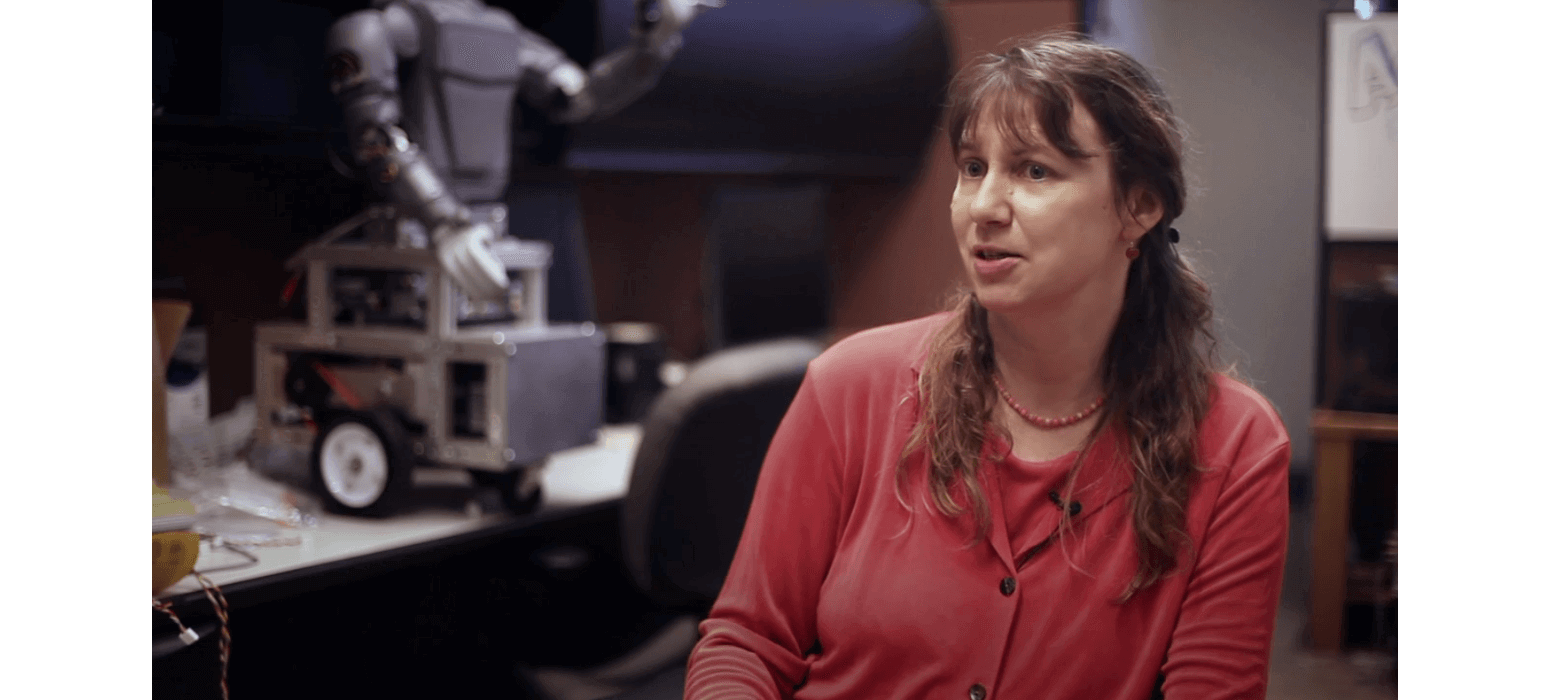
Prof. Maja Matarić, vice dean of research, USC Viterbi School of Engineering
USC Viterbi: Of all the potential research areas, why has socially assistive robots (SAR) and children with autism spectrum disorder (ASD) galvanized your attention? Why this, why now?
Maja Matarić: About 15 years ago, I was defining a new direction of research and was inspired to pursue something that would enable robots to directly benefit numerous people, especially those who truly needed help. This led me to the field of assistive robotics. In learning about what most people need, regardless of the special situation they were in – recovery, rehabilitation, retraining, etc. – I discovered that it is a combination of support, motivation and companionship. These elements are critical yet missing due to the lack of accessible, trained and affordable human care, so I was inspired to create personalized robots that could provide just that.
USC Viterbi: You are in the midst of arguably the largest autism and robots study conducted by a university. Tell me about that.
Maja Matarić: As part of our National Science Foundation (NSF) supported Expeditions in Computing grant, we are going to conduct an ambitious study involving placing socially assistive robots in homes with one or more children with autism for a month, in order to learn how families interact with such robots in the course of everyday life. One of the studies will be led by Yale University and the other by USC. Both studies involve a pairing of a robot and a tablet for the interaction with children and families, but each study will use different robots and has different specific scenarios it will explore, in order to maximize how much we learn from this great opportunity. Because this is a very complex experiment, we will start it only when we are fully ready, and that is most likely going to be mid-summer.
USC Viterbi: Share a bit about the vision for the future. What role do you see these robots playing in the day-to-day lives of kids with ASD?
Maja Matarić: Autism is a complex and still poorly understood challenge with a constellation of symptoms and severities. It is a perfect example of a challenge that demands a completely personalized solution, one that is adapted to the child and changes with the child’s development and evolving needs. That is what makes SAR a great potential tool for ASD therapy. We hope to better understand just how effective SAR can be in this context, how do children interact with SAR in the home, do the robots promote social behaviors in the long run – not just initially – and do those learned social behaviors transfer to interactions without the robot present. These are the same questions that any type of therapy must address.
“I would like to contribute to the future in which all people have support they need to thrive and reach their potential. Some of that support must come from other people, but so much is needed, that some of it must come from technology. So we need to develop truly human-centric ethical technologies, including robots.”
— Prof. Maja Matarić
USC Viterbi: What role, if any, can socially assistive robots play as kids on the spectrum get older? How might they be valuable to adults?
Maja Matarić: Children with autism receive much more attention than adults with autism, not only in the media, but also in terms of support services that are available, insurance coverage, and other opportunities related to quality of life. It is important to consider how any therapeutic method can grow along with the child; because of our emphasis on personalized SAR, the goal is to create a companion for the child, one that continues to change and adapt to the child as the child becomes a young adult and beyond. The need for companionship and support does not diminish with age.
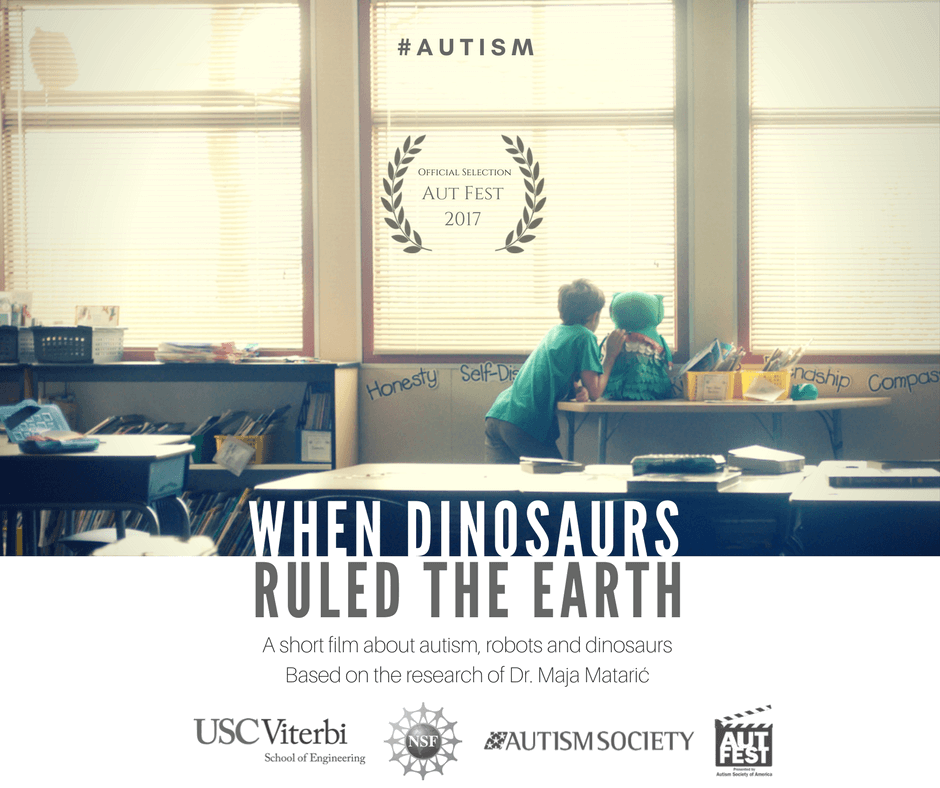
USC Viterbi: What are the obstacles that must be overcome to move this research from beyond the USC Viterbi Interaction Lab into the commercial marketplace?
Maja Matarić: I believe that socially assistive robotics is ready for commercialization. While there is a great deal more to learn and discover and develop, the need is tremendous and the technology sufficiently ready to create systems that can be helpful to people. That is my inspiration for starting a company. There are many potential pitfalls, and some domains will be easier to develop for than others, but it’s time to start taking things out of the lab and into improving people’s lives.
USC Viterbi: How would you characterize your role in the rise of socially assistive robots (SAR)? What are your guiding principles here?
Maja Matarić: My Interaction Lab at USC defined the term “socially assistive robotics.” The credit goes to David Feil-Seifer, who was a Ph.D. student in my lab, and is now an assistant professor of computer science at the University of Nevada, Reno. It is thrilling to see how rapidly the field is growing; there are now federal funding opportunities for research and development of SAR systems – there is one from NIH right now! There are startups and large companies developing SAR systems for the consumer market, and there are numerous wonderful developments and results being published. The field will continue to grow and thrive because it is a combination of a huge and growing need by large populations, and readiness of the component technologies for systems to be developed and deployed in the real world. I have loved pioneering this field and I hope to pioneer it further, into improving people’s lives.
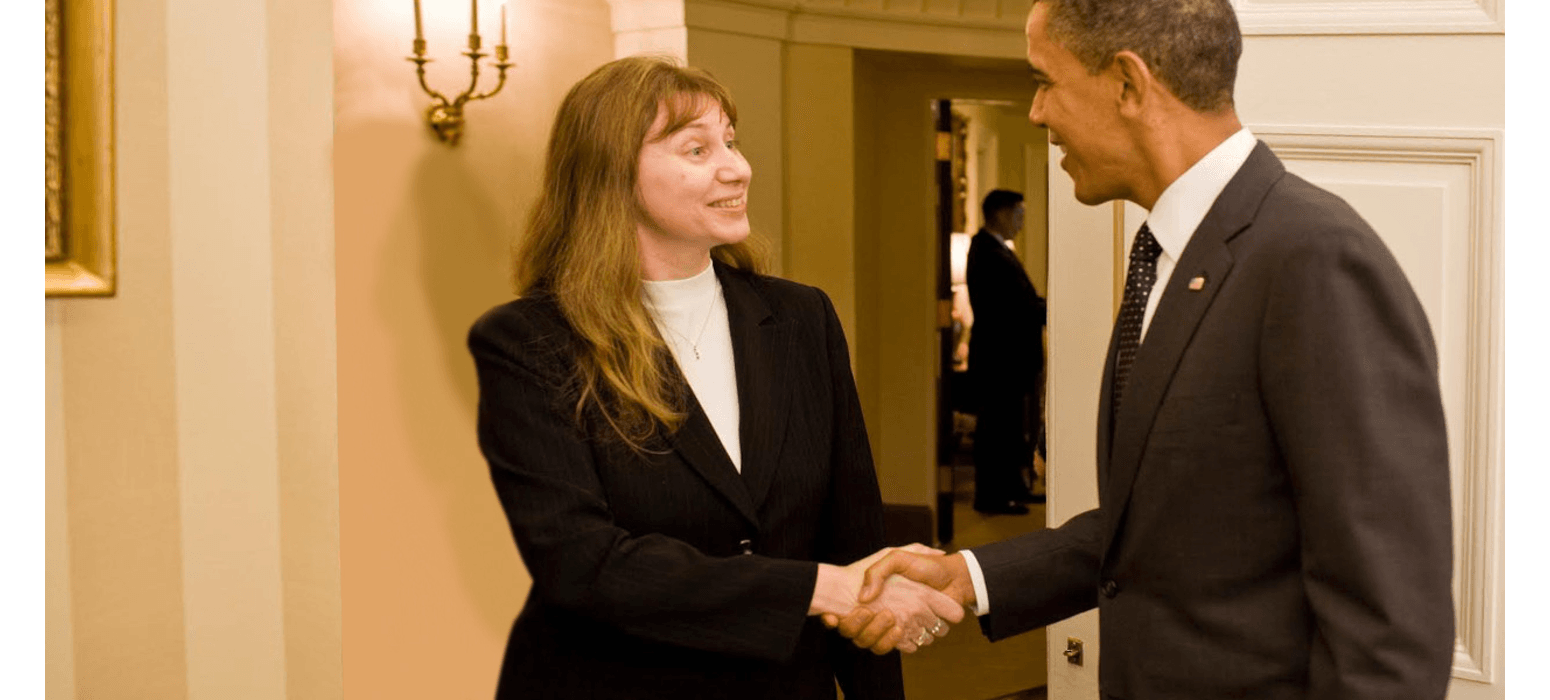
Prof. Maja Matarić was honored by President Obama in 2011 with the Presidential Award for Excellence in Science, Mathematics and Engineering Mentoring / official White House photo by Pete Souza
USC Viterbi: What misconceptions – if any – would you like to share about the role of robots aiding and assisting children with autism?
Maja Matarić: A major persisting misconception about SAR in general, not just for use in autism, is that the robots are meant to replace human caregivers. That is never the goal or the intention. Human care is unique. Machines are there to fill the care gap, which is vast and yawning, because many people need hours if not around-the-clock care, and the economics of that are unsustainable for almost everyone.
USC Viterbi: Who are your heroes and why?
Maja Matarić: My heroes are my mother – 83 now, has published over 40 books of poetry and fiction, was widowed and moved to a new country at 48 where her Ph.D. was not recognized, and she had a teenager to take care of. She is the embodiment of grit. And my uncle, who told me 35 years ago that “computers are the future.” And he was right.
USC Viterbi: What do you tell your own kids is “the future?”
Maja Matarić: I tell my kids and all kids that the goal of engineering is to make the world a better place, by solving all problems, from the smallest to the largest. So engineers get to shape the future; we should encourage children to aim to shape it and drive it in a better direction, by solving the major problems that face us as a society and planet. Because that’s what engineers do.
USC Viterbi: Your research in SAR goes beyond autism to aiding the elderly, Alzheimer’s patients, stroke victims and even aiding intergenerational living – improving social bonds between multiple generations living under one roof. What’s the broader vision for society?
Maja Matarić: I would like to contribute to the future in which all people have support they need to thrive and reach their potential. Some of that support must come from other people, but so much is needed, that some of it must come from technology. So we need to develop truly human-centric ethical technologies, including robots.
Published on April 4th, 2017
Last updated on May 16th, 2024





![PROFESSOR LONGWEI LIU [PHOTO COURTESY OF SHANSHAN QIN]](https://viterbischool.usc.edu/wp-content/uploads/2023/11/Longwei-Liu-1-300x150.jpg)

